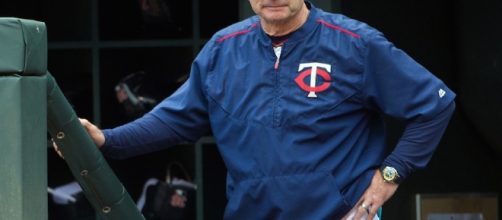The only good thing about being at the bottom of a big league ranking at season’s end is being at the top of next year’s MLB’s amateur draft selection. That’s when the worst clubs have an opportunity to plant seeds to become contenders. If a bad team is really awful, it might be lucky enough to receive back-to-back first player picks, and who knows?
For example, the 2008 Washington Nationals were an MLB worse 59-102. That earned them the first selection in the June amateur draft where they choose Stephen Strasburg with the first pick. The Nats were even worse in 2009 falling to 59-103.
Their reward was taking Bryce Harper with the first pick of the 2010 draft. By 2012 Washington was a perennial contender.
The Minnesota Twins have had one winning season since 2011. That was 2015 when they finished 83-79. The team followed that campaign with a 59-103 debacle last year to earn the 2017 first selection. There are plenty of pitchers to choose from both high school and college. The first players expected to be taken, according to several baseball writers are listed below.
Top prospects
Analysts generally agree Hunter Greene, a shortstop and right handed pitching prospect out of Notre Dame High School in Southern California—the same school Giancarlo Stanton attended—will be an early choice.
If Minnesota pulls the trigger on Greene, the Twins are expected to groom him as a power-hitting middle infielder. Greene was shut down in April after hurling 28 frames, winning three games and striking out 43. He only hit .324 as a senior after blasting .419 as a junior. A high school all America, Greene committed to UCLA as a freshman.
His fastball regularly reaches the high 90s and it is Greene’s only effective pitch.
If Minnesota wants a more mature arm, they may find it in Vanderbilt’s Kyle Wright. The Commodore hurler struck out 273, walked 82 and has a 2.57 ERA after 59 college games. Wright will be on the hill June 3 when Vandy faces St. John’s in the double elimination first round of the NCAA Clemson regional.
The junior was 4-5 this year with 104 Ks over 89.67 innings.
All told, six of the top 10 prospects on Baseball America’s list hurl, including the first five. If the Twins pass on Greene, the Reds eyes are thought to be on Brandon McKay, a pitcher/first baseman for Louisville. McKay—described as the nation’s premier dual threat—is 9-3 with a 2.37 ERA in 14 starts on the hill while throwing a team-high 91 innings. At the plate he’s slugging .363/.481/.705 with 17 home runs and 52 RBIs.
If Greene falls to third—and the San Diego Padres—high school players could be the third, fourth and fifth selections in this year’s June draft. The Tampa Bay Rays are looking for the best player available and he will be 2017 High School All America Royce Lewis of JSerra Catholic High in California.
Lewis hit .388/.569/.662 with 24 walks and seven strikeouts. He hit four home runs and stole 23 bases in 26 attempts. UC-Irvine has recruited Lewis. Southpaw MacKenzie Gore, if available, would be a likely target for the Atlanta Braves. Gore is graduating from Whiteville High in North Carolina. Gore went 9-0 with a save and played right field and first base. He has committed to East Carolina.
College players
A few Atlantic Coast Conference players—in addition to McKay—are drawing attention. UNC’s J.B. Bukauskas, who has an 87-88 mph slider, is anticipated as a high pick. After hitting more home runs (12) than strikeouts (8) Virginia’s first baseman Pavin Smith should go high. Fellow Cavalier Adam Haseley's slash line of .399/.496/.676 will make him the apple of someone’s eye.
In addition to 14 dingers, Haseley also stole 10 bases in 14 attempts.
Not to be out done, the Southeastern Conference also has a couple a players expected to be selected high after Wright. Another dandy Vandy is Jeren Kendall. The outfielder strikes out often, but connected for 15 homers this season while batting .301 and has all-around skills. Florida junior Alex Faedo started 15 games this year compiling a 7-2 record, striking out 113 in 96.33 frames and allowing 81 hits and 32 walks.
The top ten picks in the draft—held by the Twins, Reds, Padres, Rays, Braves, A’s, D’Backs, Phillies, Brewers and Angels—are protected. If one of those teams signed a top free agent, they would keep that pick and instead surrender their next-highest selection.
Most clubs surrender their first pick and a compensatory pick between rounds 1 and 2 ordered by previous year’s rank. Owning a protected pick is great for a rebuilding team, as it can pursue a top free agent while retaining that valuable position at or near the top of the draft.


